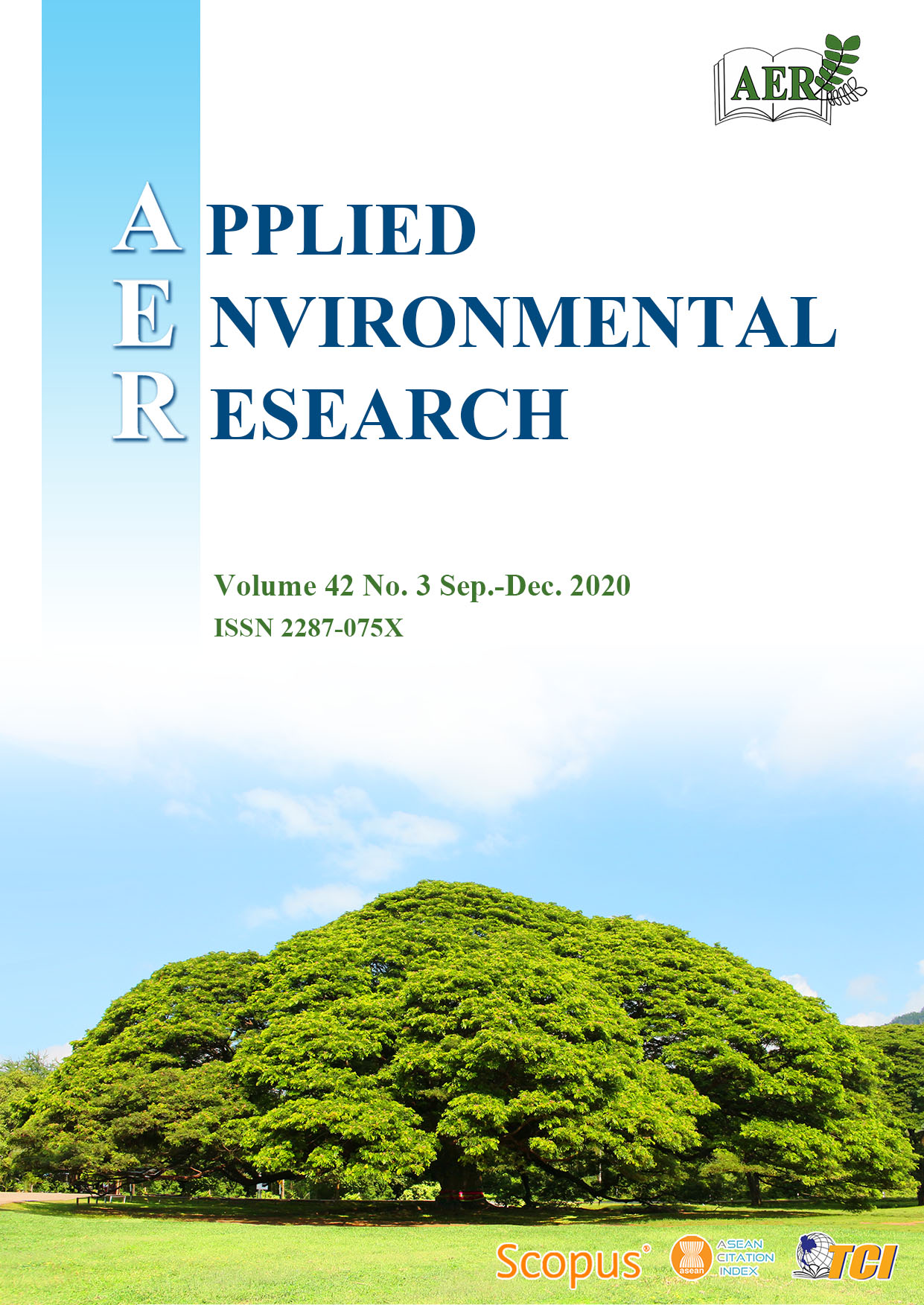Potential Degradation and Kinetics of Melanoidin by Using Laccase from White Rot Fungus
Main Article Content
Abstract
This study was attempted to use laccase extracted from white rot fungus to remove melanoidin in the ethanol production wastewater. The isolated fungus producing the highest laccase was identified as Megaspororia sp. The highest degradation efficiencies of the purified and crude laccases were 48.00% and 44.60%, respectively. Both degradation kinetics well fit Michaelis-Menten model. The Michaelis constant (Km) and maximum rate of reaction (Vmax) were 0.82% melanoidin and 0.0045% melanoidin h-1 for the degradation by the purified laccase and 0.71% melanoidin and 0.0037% melanoidin h-1 for the degradation by the crude laccase. Turnover number (Kcat) of purified and crude laccases were 0.00023 and 0.00019% melanoidin U-1 h-1, respectively. Catalytic efficiency (Kcat/Km) of purified and crude laccases were 0.00028 and 0.00027 U-1 h-1, respectively. The affinity of the crude laccase was slightly higher because of its non-specificity. Kcat and Kcat/Km of the purified laccase were higher than the crude laccase. Proposed potential degradation result showed that laccase could oxidize CH3, carbonyl groups, haloalkanes (C–H), C–O and C–N bondings which probably caused decolorization of melanoidin in wastewater. Thus, the purified and crude laccases can be used to decolorize melanoidin-containing wastewater from ethanol industries. As the attempt to use purified laccase consumed times and costs especially in purification steps, the crude laccase can be used to degrade color of melanoidin in wastewater with only 3.4% lower than the purified laccase.
Article Details

This work is licensed under a Creative Commons Attribution-NonCommercial 4.0 International License.
Published articles are under the copyright of the Applied Environmental Research effective when the article is accepted for publication thus granting Applied Environmental Research all rights for the work so that both parties may be protected from the consequences of unauthorized use. Partially or totally publication of an article elsewhere is possible only after the consent from the editors.

